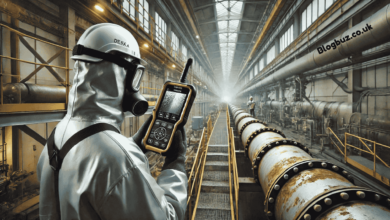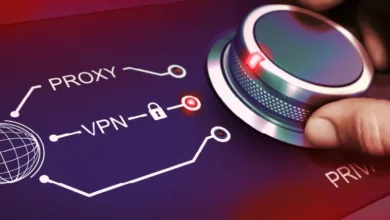7 Things About DIN Rail Meter You Must Know

If you’re setting up an energy management system, you’ve likely come across the term DIN rail meter. Whether you’re dealing with a 3 phase electric meter in an industrial setup or planning efficient monitoring for a residential unit, understanding DIN rail meters is essential. These compact, reliable devices are crucial for managing energy usage accurately, but many people overlook their full potential. So, let’s break down the key facts you should know—especially if you’re in the business of improving electrical efficiency.
1. What Exactly is a DIN Rail Meter?
A DIN rail meter is a standardized, compact electric meter specifically designed for mounting on a DIN rail, a metal rail commonly used in circuit breakers and control panels. These meters monitor electricity usage and are ideal for both single phase meters and 3 phase electric meters. What makes them truly efficient is their plug-and-play design, which simplifies installation, maintenance, and replacement.
The DIN rail standard ensures compatibility across various brands and types of equipment. Whether you’re managing a residential circuit board or an industrial control panel, DIN rail meters help streamline operations and conserve panel space.
2. Ideal for Both Residential and Industrial Applications
Many assume that DIN rail meters are only meant for commercial use. In reality, they are equally suitable for homes, especially smart homes that require advanced energy monitoring.
From tracking consumption in a small apartment with a single phase meter to managing large-scale facilities using a DIN rail 3 phase electric meter are versatile. Their compact size and modular nature make them a favorite for electricians, engineers, and facility managers alike.
In large buildings, shopping malls, or manufacturing plants, these meters enable centralized monitoring, energy auditing, and even remote control through IoT integration.
3. Supports Both Single and 3 Phase Systems
A crucial feature of DIN rail meters is their compatibility with both single phase and 3 phase energy meter systems. In simple terms:
- Single phase meters are generally used for homes or small offices.
- 3 phase electric meters are used in industries and high-load environments.
Many modern DIN rail meters can switch between these modes or are available in variants suited for either configuration. This adaptability saves time and reduces the complexity of choosing the right device for your system.
4. Digital Displays and Smart Functionality
The era of analog dials and manual readings is a thing of the past. Today’s DIN rail meters come with digital displays, allowing for real-time monitoring of voltage, current, frequency, and power consumption.
Advanced meters even include:
- Modbus communication
- Data logging features
- Integration with building management systems (BMS)
These smart features are not only helpful for engineers and building managers but also enable homeowners to understand their power usage better.
The integration with IoT platforms makes it easier to implement energy-saving strategies, track anomalies, and plan maintenance—without being on-site.
5. Compliance with International Standards
To ensure safety, accuracy, and compatibility, DIN rail meters are manufactured under strict international standards such as MID (Measuring Instruments Directive) in the EU.
MID-certified phase electric meters guarantee accurate billing and tamper-proof operation, which is particularly important for sub-metering and tenant-based billing systems.
If you’re in charge of selecting a meter for any critical application, always look for these certifications. It helps build trust and reliability, especially in industrial and commercial applications of DIN rail systems.
6. Easy Installation and Space Efficiency
DIN rail meters are specifically designed for easy, tool-free installation in modular panels. You don’t need to be an expert to install one (though a certified electrician is always recommended). They slide easily onto standard DIN rails and occupy very little space.
This space-saving design is vital in modern distribution boards where multiple devices—breakers, relays, controllers—compete for panel real estate.
Also, their modular nature means you can replace or upgrade one unit without disturbing the rest of the panel, minimizing downtime.
7. Cost-Effective and Scalable Energy Management
If you’re looking for an affordable yet scalable energy management solution, DIN rail meters are the answer. Thanks to mass production, high demand, and global standardization, they come at competitive prices.
Moreover, the market has evolved with smart metering technology that allows centralized data aggregation. This means that with the right software, you can monitor dozens—or even hundreds—of meters from a single dashboard.
Whether you’re operating a small workshop or managing an industrial plant, DIN rail meters can be scaled to meet growing energy needs. Combined with cloud-based analytics, they help optimize operations, reduce waste, and support sustainability efforts.
Final Thoughts
The DIN rail mounted meter plays a critical role in modern electrical systems—from simple household setups to complex industrial and commercial applications.
Whether you’re installing a 3 phase electric meter in a manufacturing plant or using a single phase meter at home, DIN rail meters provide accuracy, durability, and ease of integration. Additionally, with smart features and compliance with global standards, they offer future-proof performance in a fast-evolving energy landscape.
Choosing the right DIN rail energy meter can lead to better energy management, smarter operations, and significant cost savings in the long run.
Key Takeaways:
- DIN rail meters are efficient, and compatible with both single-phase and three-phase systems.
- They are commonly used across industrial and commercial applications, as well as in residential installations.
- Look for certified, smart meters to ensure long-term value and reliability.




